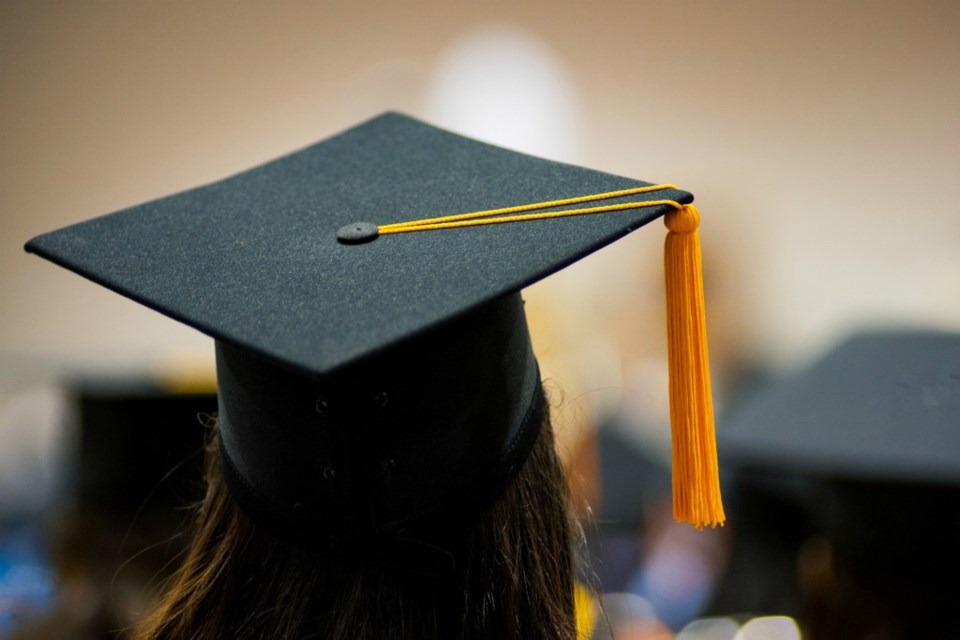Although the 2019-20 school year was the first to end in a pandemic, the graduation rate of students in the Sunshine Coast School District No. 46 (SD46) reached a 14-year high.
Both the Indigenous and B.C. resident student graduation rates increased from the previous 2018-19 school year, which saw a five-year low for B.C. residents at 83 per cent, and 66 per cent for Indigenous students.
In 2019-20, the graduation rate of Indigenous students reached 85 per cent or 39 students in SD46, according to the six-year completion rates on the Ministry of Education’s website. The typical graduation rate for Indigenous students across B.C. was 65 to 80 per cent last year.
For the B.C. residents in SD46, there was an 88 per cent graduation rate for 2019-20 with a total of 181 graduates, compared to the typical grad rate across the province of 81 to 91 per cent.
Both of these increases show a jump to the highest recorded graduation rates for SD46 since before the 2006-07 school year, the earliest numbers available on the studentsuccess.gov.bc.ca website.
Special needs students completed the school year at a 63 per cent rate, for a total of 35 graduates who have special needs.
Superintendent Patrick Bocking told Coast Reporter that the 2019-20 graduation rates are something the school district is “intensely proud of.”
“It’s one of the key markers of success coming out of our education system that kids are graduating at a rate higher than they ever have before. So we are absolutely excited about it, and inspired by the kids that are achieving so well,” Bocking said.
The change in graduation rates over the last 14 years or so is a tribute to the school district and its early learning program, which the Class of 2020 would have taken part in, Bocking said. He also credited shíshálh Nation’s work as a partner with the school district and Indigenous students.
Following the 66 per cent Indigenous student graduation rate of 2018-19, Bocking said the district brought together the principals and vice principals of the secondary schools with their counterparts from Indigneous and inclusive education and reviewed the record of every student who hadn’t completed within six years. Every child is different, Bocking said, and the school district doubled its efforts to support all students.
At the June 9 SD46 board meeting, director of instruction Paul Bishop spoke about the importance of parity and ensuring all students are prepared for success.
“I’m very proud of the work that we’re doing through Ensouling Our Schools and very consciously considering reconciliation and steps that we can take in order to ensure that all students feel welcome in our schools and graduate with that sense of purpose,” Bishop said.
Bishop said next steps to further that work will include continuing an equity scan and consulting with the Ministry of Education as well as the Indigenous support team.
The preliminary graduation rates for the current 2020-21 school year won’t be available until this fall, Bocking said, after the Ministry of Education has completed tallying the numbers across the province.



